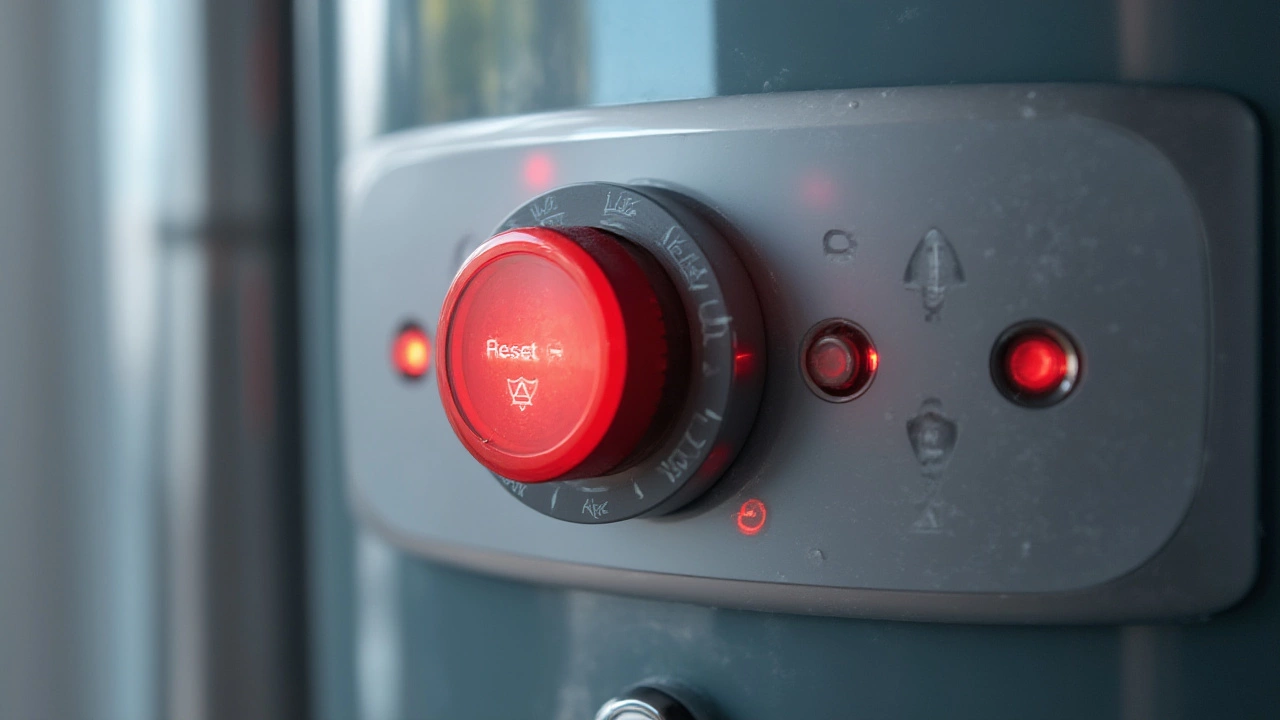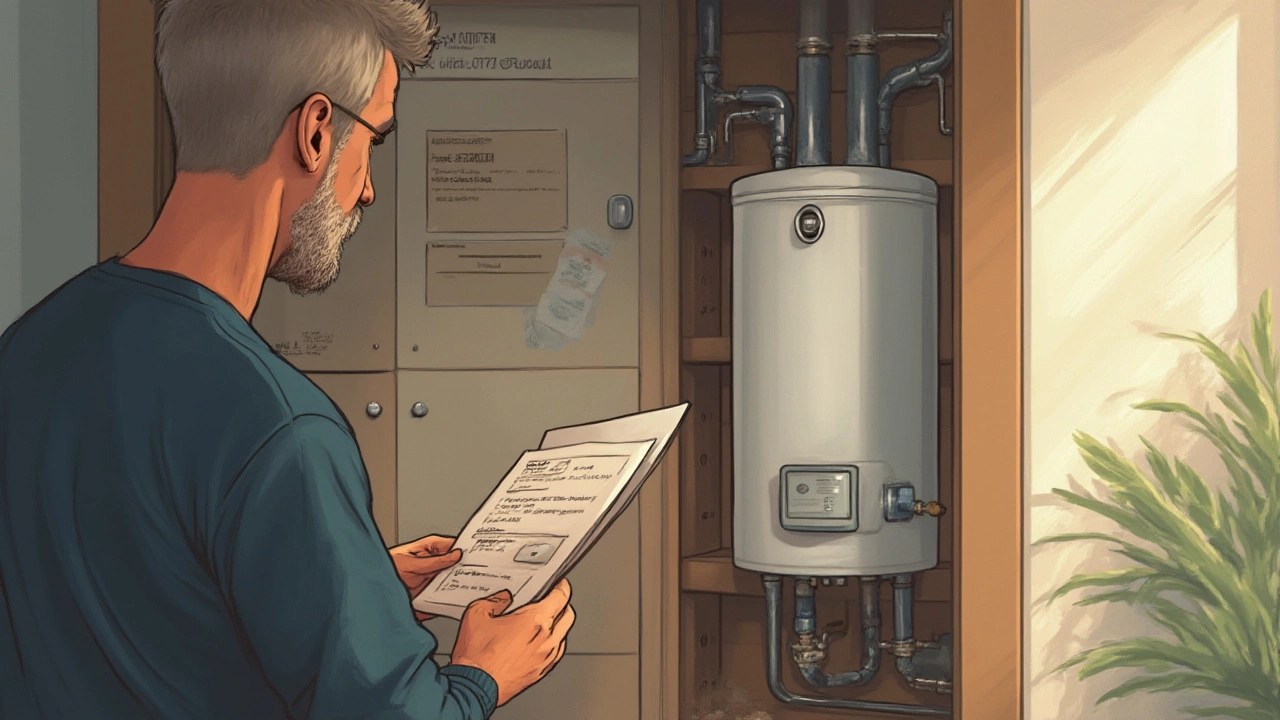Pressing random buttons on your home appliances can feel like pulling the lever on a slot machine—you’re never quite sure what’s going to happen. Your water heater isn’t just another hunk of metal in the garage. It’s a tank full of scalding hot water with electrical components quietly working behind the scenes. But here you are, staring at that red reset button (sometimes called the “eco” or “high-limit” switch), wondering if it’s safe to give it a push. Sure, you want hot water again, but what exactly are you risking?
What Really Happens When You Press the Water Heater Reset Button?
That big red button isn’t just there for looks. The reset button on an electric water heater is tied to something called the high-limit switch, which is designed as a safety fallback. If water temperature inside the tank gets too high—usually past 140°F (60°C)—the switch kills power to the heating elements. This isn’t about being dramatic; it’s about stopping a runaway heater from turning your tank into a pressure bomb. In 2023, household burns from overly hot water led to more than 7,000 ER visits in the UK alone, mostly from preventable scalding incidents. So that reset button steps in when the heater is hotter than it should be, usually caused by a stuck thermostat or a faulty heating element.
Pushing the reset button is like telling your heater “Take a breath and try again.” If pressing it returns your hot water and everything seems normal, you might think it’s problem solved. But it's crucial to understand it’s not a magic fix—it’s a temporary lifeline. The underlying cause, whether it’s a defective thermostat, fried wiring, or a buildup of mineral sediment, is still lurking. If you find yourself pressing that button more than once a year, it’s signaling a deeper issue—a heater crying for professional attention rather than just a quick fix. According to a 2024 survey by the UK’s National Inspection Council for Electrical Installation Contracting (NICEIC), about 12% of household water heater callouts involved repeated reset trips due to unresolved electrical or mechanical problems.
If your water heater’s reset button has tripped, take a close look. Most tanks have a removable panel with insulation behind it. Underneath is the thermostat and heating element terminals, and, at the top, that red button. Sometimes, you’ll see burn marks, melted wire insulation, or corrosion—visible red flags that something’s amiss. If that little button needs constant pushing, you’re asking for trouble, not just an inconvenience. The risk? Repeated tripping means your safety limiters are working overtime, which they’re not designed to do. Eventually, you could wear down or even bypass these vital safety features.

When Is It Safe (and Not Safe) to Use the Water Heater Reset Button?
So, is it ever actually safe to press that reset button? Yes—if you follow some common-sense rules. The button exists for owner use, but that doesn’t mean you should mash it every time you take a cold shower. Here’s a clear way to look at it:
- First Occasional Trip: It's mostly safe to reset after an isolated trip. Say, you lost power and the system glitched. Go ahead—press away. But keep an eye on tank behavior for 24-48 hours.
- Frequent or Repeated Trips: Any pattern of repeated tripping (once every few weeks or months) means you have a real issue. Could be a thermostat stuck closed, a faulty heating element grounding out, frayed wiring, or excessive internal scale. None are safe to ignore.
- If You See (or Smell) Damage: If you see scorch marks, melted plastic, burnt smells, or water leaking anywhere under the panel, do not press that reset button. Turn off the breaker immediately and call a pro. Seriously, even a tiny bit of visible damage means a failing part could cause a dangerous short or even fire.
- Water Leaks or Electrically Wet Panels: Any time the inside panel is wet, skip the button and call for help. Water plus electric wiring is a recipe for shock hazards.
What about safety stats? Fires caused by water heaters are rare but real. According to Home Office data, faulty electric water heaters contributed to roughly 350 small-structure fires in the UK between 2019 and 2024—primarily due to persistent faults ignored by owners. Safety mechanisms, like the reset button, work well, but only when owners respond to warning signs actively.
One mistake folks often make is forgetting to switch off the circuit breaker before opening the access panel. Electric water heaters run on 240 volts—enough to knock you off your feet or worse if you touch exposed wiring. Always flip the breaker first, even if you’re just “taking a look.” It’s not paranoia; it’s common sense maintenance. A pro tip: When replacing insulation after you check, be sure not to cover any parts that need room for heat to dissipate, or you can accidentally trap heat, making the problem worse.

Practical Troubleshooting Tips and What To Do Instead of Just Hitting Reset
Sometimes the fastest way to hot water is to pause and check a few simple things before you resort to the reset button. Not every cold shower is caused by a safety trip—sometimes, it’s just a tripped breaker or a blown fuse. Here are tips and a step-by-step to safe troubleshooting before you press anything:
- Double-Check the Circuit Breaker: Head to your fuse box and flip the water heater’s breaker off, then on again. Sometimes random power blips cause false trips.
- Listen for Unusual Clicks or Humming: Any strange noises from the panel—clicking, buzzing, pops—mean trouble. That suggests electrical or thermal issues inside.
- Check the Age of Your Heater: If your tank is pushing 8-12 years old, especially with hard water, internal buildup or thermostat burnout gets much more likely. A fact from the Energy Saving Trust: most water heaters in the UK get replaced at year 9, and 45% of faults in older tanks involve overheating or failed thermostats.
- Feel for Panel Heat: Very hot access panels can signal dangerous overheating or failing insulation.
- Sniff for Odors: The smell of burnt plastic or wire insulation is your sign to get away and turn everything off.
Pressed the button and the heater just keeps cutting out? This is usually your high-limit switch doing its job because the tank consistently overheats. Here’s a quick reference table with common reasons why a reset keeps tripping:
| Common Cause | Symptoms | Suggested Action |
|---|---|---|
| Stuck Upper Thermostat | No hot water, or scalding water, repeated reset trips | Replace thermostat |
| Grounded Heating Element | Breaker trips, burnt smell, repeated resets | Replace element & check wiring |
| Mineral Scale in Tank | Noisy operation, low heat, overheating | Flush tank, descaling service |
| Faulty Wiring | Visible burns, melted wire insulation | Repair or replace wiring, call electrician |
| Water Leaks | Dripping under panel, rust, electrical faults | Stop water, call plumber |
If you’re not sure what’s wrong, and the button keeps tripping, get a certified technician on board. Modern heaters have multiple sensors, but they’re not infallible, especially if you have an older model without digital controls. Some new models in 2025 even send a notification to your phone when the reset trips (smart home integration has officially reached boiler closets). If yours doesn’t, check manually and don’t ignore any signs of repeat problems.
Hot tip: Consider fitting a mixing valve on older tanks that don’t regulate temperature well. Even if your heater survives, you can still be at risk for burns even at legal temperatures—kids under five and adults over 60 are way more susceptible to scalding injuries, and NHS warnings every winter reinforce this point.
So, is pressing the reset button safe? It usually is—for minor, isolated issues, or glitches. But that button’s real job is to yell “stop” when things go wrong. Treat it as a warning, not a routine solution. If your hot water’s out more than once a year, skip the guesswork, power down, and call a professional. Your water heater will thank you, and so will your toes the next time you step into a warm shower.

I am an expert in the services industry with a focus on appliance repair. My passion lies in understanding how things work and educating others in simple, engaging ways. This enthusiasm fuels my writing, where I delve into topics around appliance maintenance and troubleshooting. I aim to make these subjects clear and accessible to all readers.